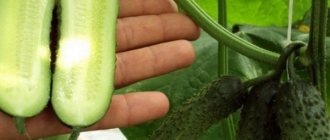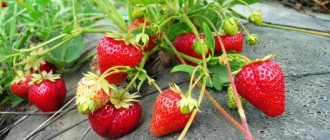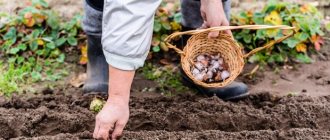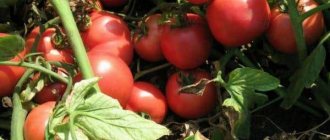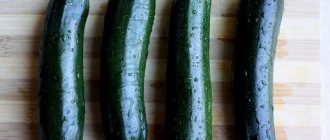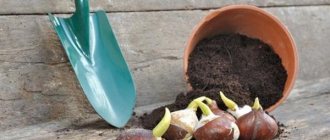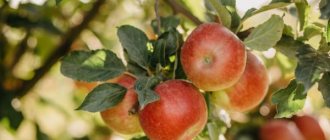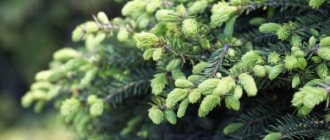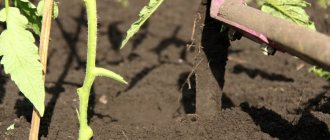Mullein or verbascum is an open ground herbaceous plant that can be found both in the wild and in well-kept home flower beds. This unpretentious, stately beauty is noticeable everywhere thanks to its high growth and bright spike-shaped inflorescences. Its flowers do not last long, but their buds open alternately, which creates the impression of continuous flowering. In terms of the number of folk names, it has few equals - this is the ataman-grass, and the cloth whip, and the golden flower, and the royal scepter (candle), and the archer, and the bear's (wolf, deer) ear. In addition to its spectacular appearance, the mullein plant also has outstanding medicinal properties, so it is also grown and collected for medicinal purposes. This universal flower is easy to grow on your own plot, and for a novice gardener it is simply a godsend.
general description
The plant belongs to the Norichnikov family and has about 300 varieties. Among them there are biennials, perennials, and even rare representatives of the same year of life. Sometimes they are not similar to each other even in appearance. Mullein is native to the Mediterranean and some regions of temperate subtropics in Asia. Its single species grow in mid-latitudes, but they are found everywhere in meadows and sunny forest edges. Domestic varieties are more similar in structure. The flowering stem is tall, straight, sometimes branched, in some hybrid varieties it can reach 2-3 m in height (usually about 1 m) and the same taproot, very strong rhizome. A dense rosette of pubescent leaves forms at the very base. The shoots of most varieties are also covered with thick pile.
The buds on the peduncle are arranged in tiers, their size decreasing in height. The flowers open alternately throughout the summer. By autumn, spherical and oblong seed pods with small seeds are formed. The mullein plant is widely used in folk medicine.
The verbascum flower lives so short that, having bloomed in the morning, it can close and fall off by night. But the next day a new one will bloom in its place.
Use in the garden
Tall plants with such large and beautiful flowers will not go unnoticed in the garden. Especially when it comes to decorative varieties with different colors of petals. Throughout the summer, mullein will attract insects and birds. It begins to bloom when the primroses have already faded and the later perennials have not yet formed buds. Thus, mullein fills the pause in flowering. It is important to choose the right neighbors so that the flower garden looks harmonious. They can be orchis, catnip, salvia, anafalis, sage.
Thickets of mullein are also used as a background in the background of a flower bed. It can be planted in small groups in the middle of the lawn, in rockeries or along paths.
Types of mullein with photos
Not all varieties of verbascum have a decorative appearance; only some of its forms are planted in garden plots. This is mainly the result of selective crossing, hybrids with more striking external characteristics.
Scepter-shaped mullein (dense-flowered)
Large, up to 5 cm in diameter, five-petal inflorescences are bright yellow and irregular in shape. They are located tightly on the stem, the length of which can reach 2 m. The leaves are oval, tapering towards the top. The aroma is not strong, pleasant, when dried it intensifies and acquires a honey tint.
Common (bear ear)
A heavily pubescent variety covered with silvery hair. The spike-shaped inflorescence is short and cone-shaped, like the entire shape of this variety. The foliage is dark green, gradually becoming smaller and covering almost the entire stem. The flowers are small, no more than 2 cm.
Paniculate
Biennial. Grows in dry places - on slopes, high meadows, along roads. But in places with colder climates it prefers to settle along river banks. It has serrated leaves and blooms in June-July. Stem height up to 130 cm.
Black
The foliage of this variety is located only in the lower third. The inflorescence is long, yellow, the petals at the base are darker brown, the stamens have purple pubescence. The height of the stem usually does not exceed 1 m. The ovoid or heart-shaped leaves are interspersed with buds, which distinguishes this variety of mullein from others.
Drug
It has a densely leafy stem up to 1.5 m tall, crowned with a long branched spike-shaped peduncle. All parts of the flower are covered with thick pile. The leaves are oval, long, with a blunt ending. The anthers are red. The name mullein is often used to denote varieties, referring to the medicinal properties of the plant.
Hybrid
The most decorative group, which includes many varieties with flowers painted in different palettes. There are both dwarf varieties and large varieties that grow more than 2 m.
The most popular varieties:
- Herry Helen - produces bright pink buds up to 10 cm in diameter.
- Mont Blanc is a large plant with large and expressive snow-white flowers and silvery leaves.
- Jackie is a dwarf hybrid, not exceeding 45 cm. The buds are a muted smoky pink color.
- Pink Domino - characterized by spectacular flowering in orange-crimson tones.
Planting and care
Mullein is a very unpretentious plant, so growing it should not cause difficulties, and errors should not cause irreparable problems.
The soil
This crop does not like soils that are too nutritious and rich in humus and may even die on them by the end of the first season. However, the soil for garden specimens should be loose and fairly light. To do this, garden soil is mixed with sand and peat and a little fine gravel is added to it. Clay areas should be avoided.
Illumination
Verbascum feels good in partial shade, although it loves light. In hot areas, it is better for him to find a place that is not exposed to the sun all day long. In complete shade, it will also not die from lack of light, but it will develop poorly and will not produce active flowering.
Watering
In summer with regular rainfall, watering is not required. In dry weather, verbascum is watered, but not abundantly, and only after the soil has dried well. The powerful taproot is capable of extracting moisture from great depths. If you allow moisture to stagnate, the flower may die.
Weeding, mulching
Neighborhood with a large number of weeds worsens the health and overall water quality of the plant, although it is not critical. But because of them, the decorative quality of the site and the quality of medicinal raw materials suffer, if the crop is grown for the purpose of harvesting it. Therefore, it is better to carry out weeding in a timely manner, especially at the beginning of flowering, when the vegetation in the area is actively growing. Weeding can be replaced by mulching and, partially, loosening the soil. Pine bark, wood chips, and small pebbles are suitable for mulch; in addition, it improves the aesthetics of planting.
Top dressing
The unpretentiousness of mullein also extends to its demands on fertilizers - it needs very little of them. The nutritional value that is in the soil at the time of planting lasts for a long time, and sometimes forever. On poor soils, you can limit yourself to a single application of a mineral complex or organic matter in a small amount to the root circle. It is best to do this before flowering.
Wintering
Different species of this crop experience winter in different ways. Varieties close to wild-growing ones do not need shelter. Hybrid varieties may not survive severe frosts. It is enough to sprinkle their rhizome with a layer of sawdust, peat, fallen leaves or spruce branches. Even ordinary branches will help hold back the snow and provide the necessary shelter.
Trimming
After flowering has ended, the stem needs to be cut off. This will extend the life of the plant. It is also recommended to regularly collect wilted inflorescences so that they save strength and make room for new buds. If there is no goal to collect seeds, you need to cut off the peduncle immediately, without waiting for the seed pods to ripen. In this case, the plant can live longer than two years, and hybrid varieties can bloom again in the same year.
Verbascum in landscape design
Verbascum in garden design photo
Verbascum looks great alone and in group plantings. Tall species and varieties are used to decorate fences, unsightly walls, as a background for a mixborder, or to create a hedge. Low-growing plants are planted in the middle ground of the flower garden, framing garden paths and borders.
Given the predisposition to self-seeding, verbascum bushes can appear in the most unexpected places. This gives the garden a natural feel.
The plant is combined with phlox, speedwell, delphinium, and ornamental grasses. Inflorescences of lupine, catnip, lavender, and sage go well with verbascum. At the very beginning of flowering, decorative onions, lychnis, aquilegia, and perennial poppies will be a suitable addition. When flowering ends, the voids will be decorated with heucheras, Siberian irises, and daylilies. Violet verbascum contrasts with yellow-orange flowers (gravilata, annual dahlias, eschscholzia).
Mullein breeding
If you want to preserve the characteristic characteristics of the plant, it can be propagated by cuttings, but cultivation from seeds is also available. For varietal varieties, only vegetative propagation is available.
Seeds
Growing mullein from seeds is a simple process. Sowing is done without seedlings directly into open ground, when the soil is well warmed up (May-June). Scatter them over dug up, well-moistened and compacted soil in a chaotic manner, sprinkling them with a small layer of earth on top. The seedlings must be thinned out, leaving a distance of at least 20 cm between the sprouts. The first month they are characterized by very slow growth, this should not cause concern. In the future, the growth rate will increase.
In the first summer, the young plant forms a basal leaf rosette; flowering using the seed method, with proper care, can be expected in the second year after planting.
When sowing seeds, they should not be buried too deep, otherwise seedlings may not appear.
Dividing rhizomes
For division, rhizomes with shoots of the first year are selected, which are dug up after flowering in early or even mid-autumn. Separate them with a sharp knife, preserving the shoots with part of the root on each part, treating the sections with wood ash or activated carbon. For rooting, parts of the rhizome are laid out horizontally in a sandy substrate, after which they are covered with a small layer of sand, and then with the substrate. The divisions should take root and produce small new shoots even before the onset of cold weather, but replanting them to a permanent place should be postponed until spring.
Self-seeding
The plant has a tendency to self-sow. If you do not remove the flower stalks before the seeds ripen and allow them to ripen and fall off quietly, then propagating the crop will not require any effort - all the work will be done by wind and rain. But this method has its drawbacks. New plants will sprout anywhere, will be less decorative and are unlikely to exactly repeat the characteristics of their parents. As a result, a complete degeneration of the culture may occur in a few years.
"Royal Scepter": landing
All mullein are a godsend for flower growers who do not have enough time for painstaking care.
Soil and location
Thanks to its powerful taproot, mullein is not demanding on the composition and fertility of the soil. The best option would be sandy and sandy loam soils with a neutral or slightly acidic reaction. When planting seeds of the “Royal Scepter” there are only two restrictions:
- Viscous, heavy, clayey soils - the plant develops extremely poorly in them. If there is such land on the site, it is recommended to add more sand, peat, and fine gravel to it.
- 2. Fatty black soils - when grown in such areas, mullein fattens, due to which you will admire rapidly developing greenery, and not flowering. At the end of the season, in chernozem areas, goldenflower usually dies, since there is no incentive to reproduce, and therefore to flower.
Excessive fat content in black soil flower beds can be corrected by adding more sand to the soil.
Advice. The soil for the “Royal Scepter” should be moderately fertile, light and loose. Then the mullein will live in the flower garden for several years.
When choosing a planting site, preference is given to open, sunny areas. Minor shading is also allowed, but mullein develops poorly in deep shade and significantly loses its decorative effect.
Sowing
Mullein seeds have a high germination rate and are resistant to cold weather, so the “Royal Scepter” reproduces well by self-sowing. However, this is not always convenient when arranging a flower garden.
There are 2 options for planting seeds:
- In open ground. The method is suitable for most regions of the Russian Federation. The approximate sowing time is mid-May, when average daily temperatures do not fall below +13º C. Since the seeds are very small, before sowing they are mixed with sand, sown in moist soil and lightly sprinkled with earth or peat.
- Through seedlings. This option is good for areas with short, cool summers. Seeds are sown in cups with moistened soil, without covering them with soil, and covered with film on top. When stable heat sets in, the seedlings are transplanted into the flower garden along with a lump of earth. The distance between seedlings is 30-40 cm.
Preparing the bed for the “Royal Scepter” involves deep loosening and not too much moistening of the soil. If the land is extremely infertile, apply a half dose of mineral fertilizers.
Note: do not cover mullein seeds with too thick a layer of soil. After the seed germinates, the roots themselves will settle at the desired depth.
Caring for young plants
When sowing the seeds of the “Royal Scepter” directly into a flowerbed, the first shoots will appear in about 15-18 days. In the first month, seedlings develop slowly, then quickly grow. At this stage, the seedlings must be thinned out, leaving only the strongest specimens.
If you planted the classic “Royal Scepter”, then the distance between them should be about 35-40 cm, when growing dwarf forms - 20-25 cm.
Medicinal properties of mullein
In folk medicine, all parts of the plant are used - rhizome with roots, shoots, leaves, but the flowers are of the greatest value in this regard. The list of their healing properties is very extensive and depends both on the type of plant and on the method of application. It contains tannins, mucus, flavonoids, essential oils, and entire complexes of mineral and vitamin substances. The raw material is used in alcohol tinctures, water and milk decoctions, oils, water infusions as an expectorant, enveloping, diaphoretic, hemostatic, antimicrobial agent.
It is also used against burns, arthritis, inflammation, diseases of the gums and oral cavity, herpes, warts, housing and communal services diseases, and tuberculosis. The list is far from complete.
If you boil fresh mullein leaves in milk and apply it to the wound, it will heal faster. A fresh flower applied to the bruise site will prevent the formation of a bruise.
It is amazing! Plant seeds thrown into water have a soporific effect on fish. So far this phenomenon has not been explained.
Preparation of medicinal raw materials
It is very important to follow the rules for collecting and drying medicinal raw materials. If during storage the yellow tint of the flowers changes to gray-brown, most of the beneficial properties of mullein can be considered lost. Flowers are collected in the morning, at 8-9 o'clock, when the sun has not yet reached full strength, but has already dried the dew. Neither rainy nor cloudy weather is suitable for collecting raw materials. Even yesterday's rain can cause excess moisture, which will lead to rotting.
Drying is done in a well-ventilated place, after which the product is stored in a glass container with a ground-in lid. Paper and fabric are not suitable for this, since dried raw materials tend to absorb moisture from the air and deteriorate. Only the corollas and stamens of flowers are collected, leaving the calyxes, because they degrade the quality of collection.
It should be borne in mind that the yield of the finished medicinal product is very low, no more than 10% of the weight of the collected material.
